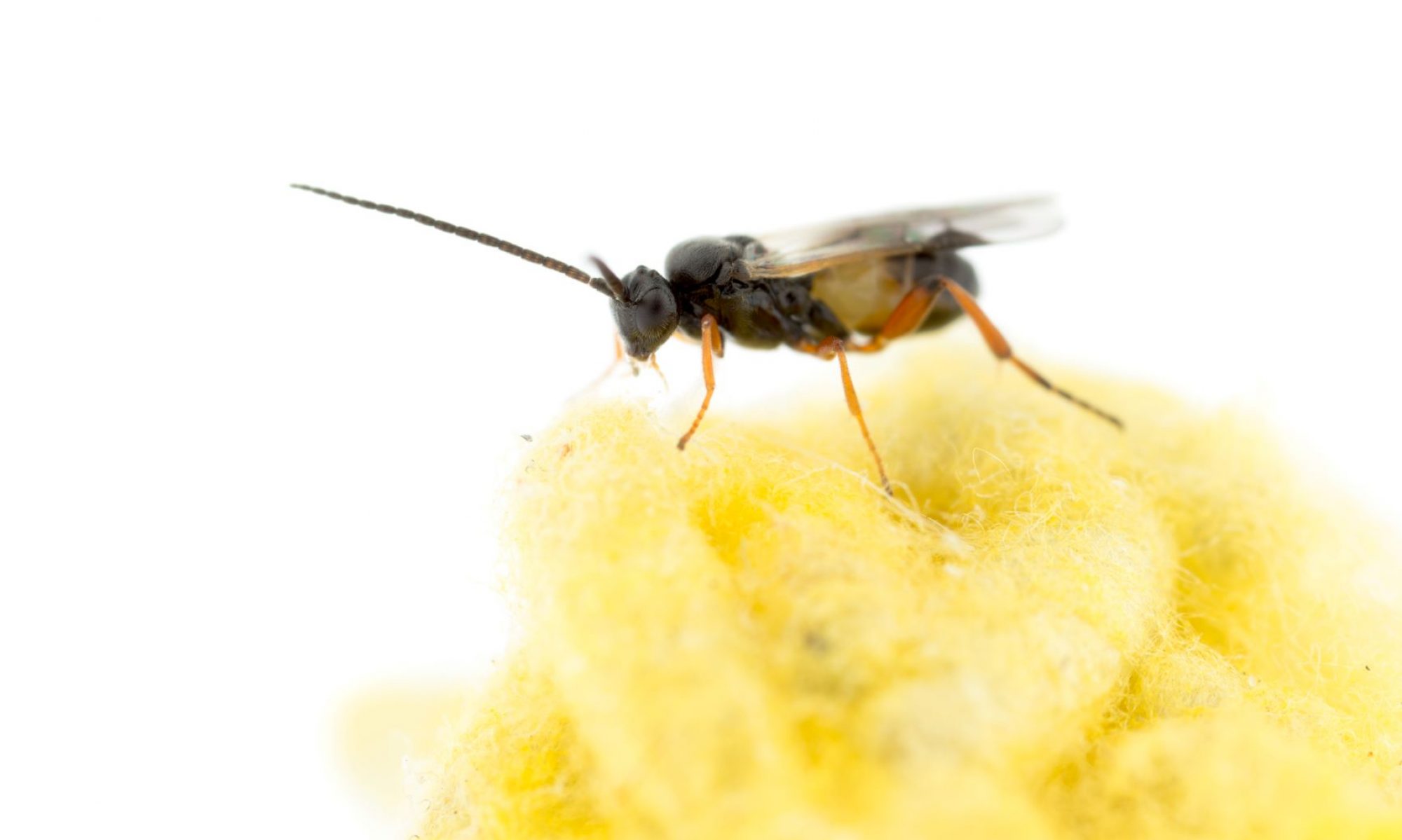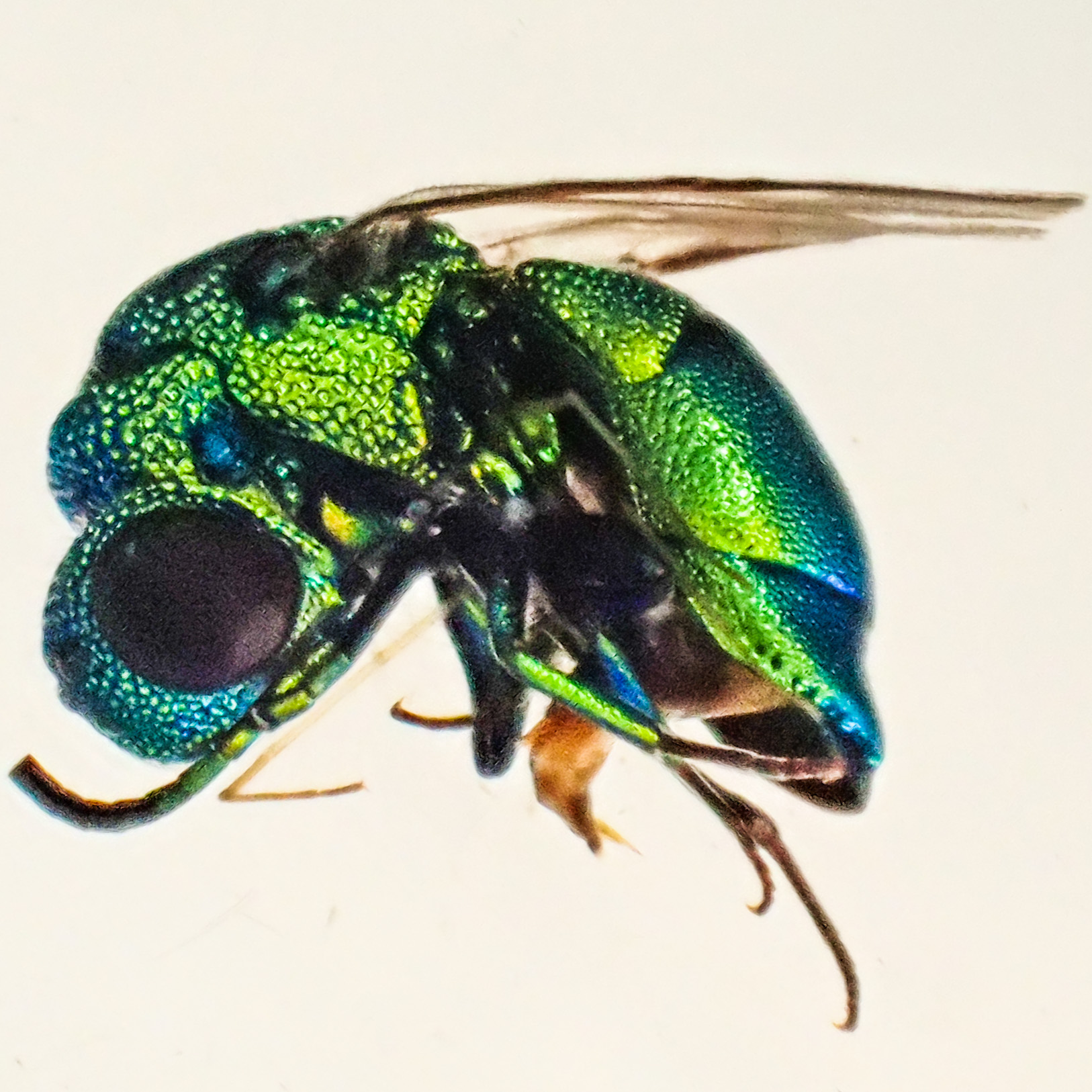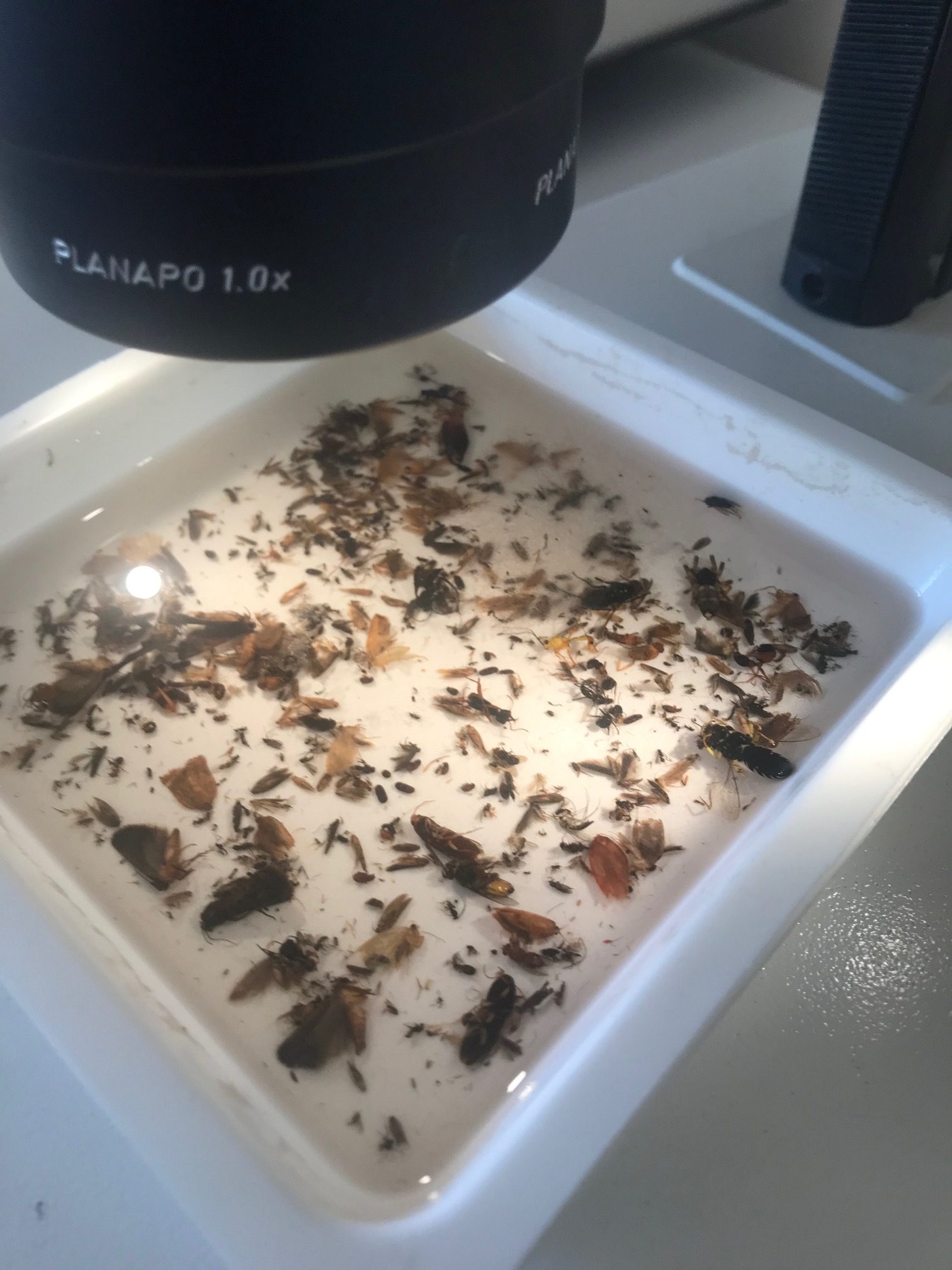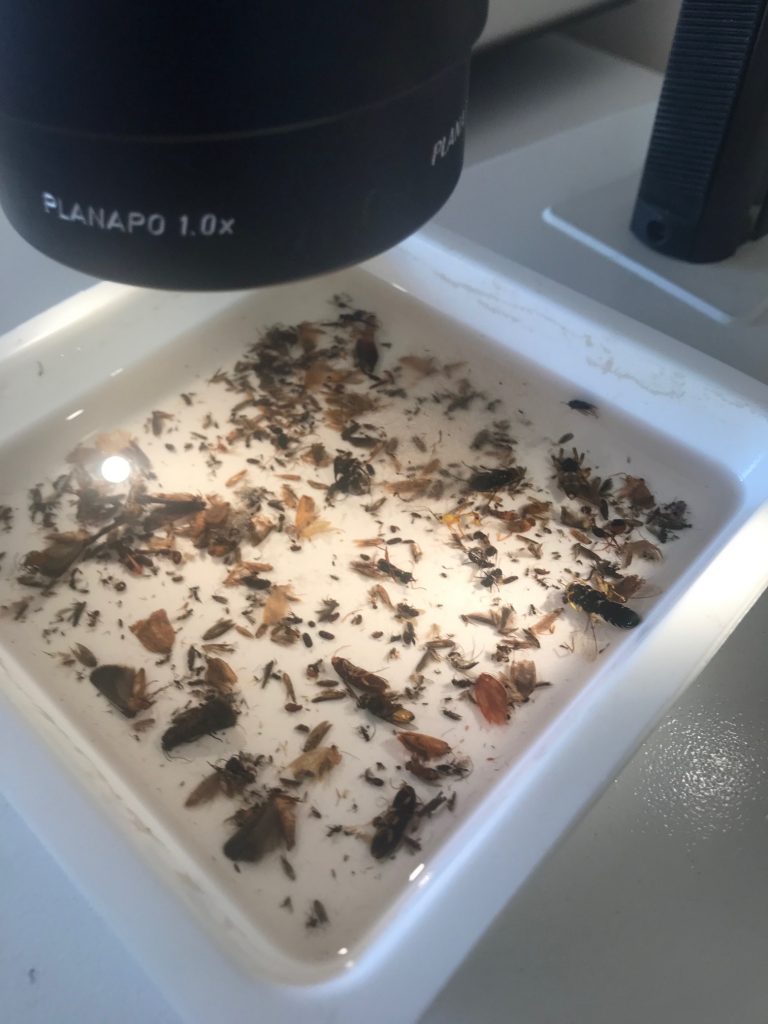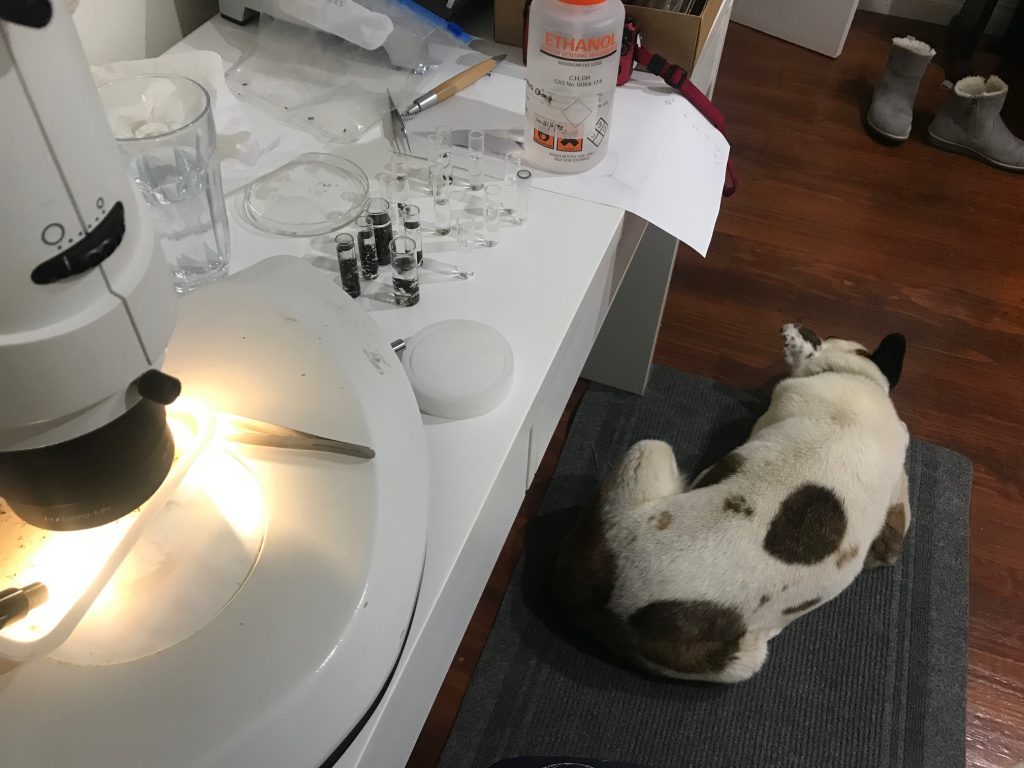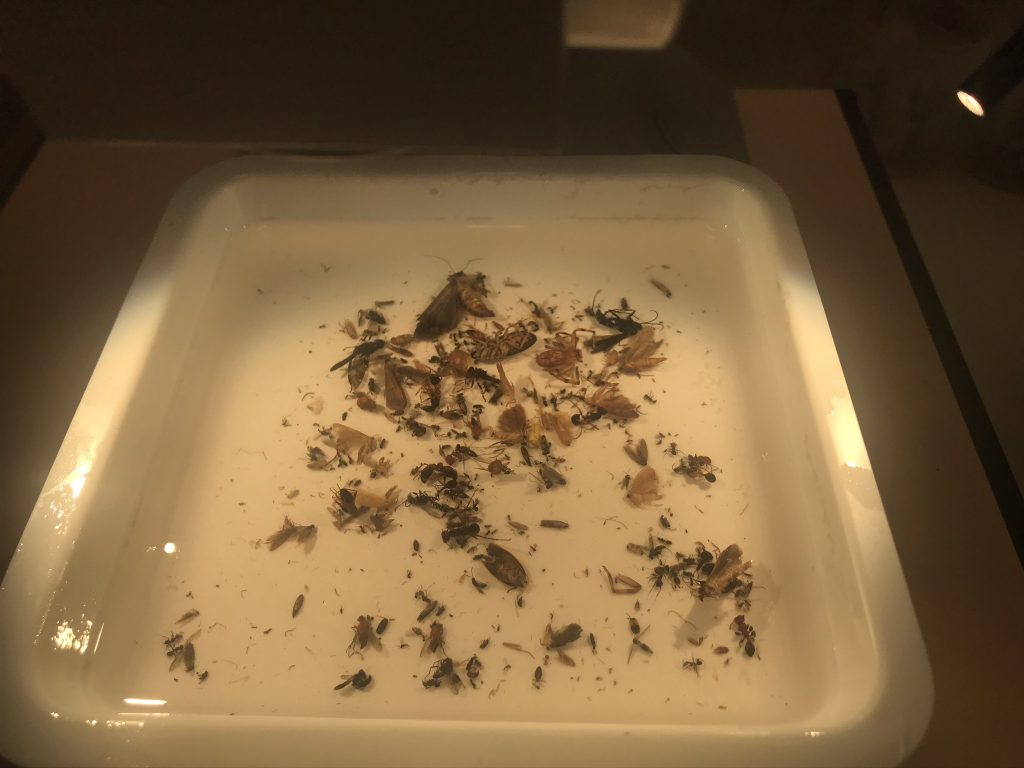Hello Waikerie YETies! I just finished sorting the first of your trap samples (I’ve still got one here to do, hopefully today!). Thought I would give you a bit of an explanation of what has happened to the samples so far.
I tipped out the sample (this one is the one that was up from the 3-18 March) into a sorting dish, and it looked something like this:
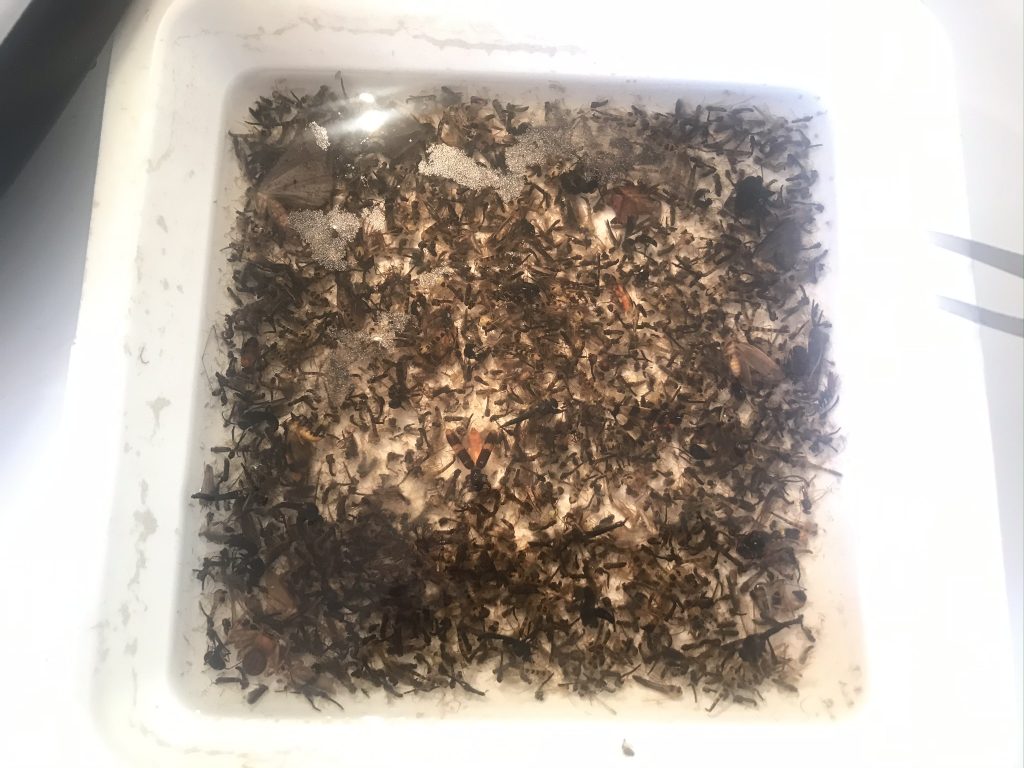
Then it was time to sort the sample to Order level – this means putting the different sorts of insects into different vials so that future researchers can find the specimens they need easily.
Sorting takes a really long time – I pick out the obvious things by eye first, then head over to the microscope to pick out all the very small insects. Because your sample had SO MANY FLIES, I ended up just picking out everything that was not a fly… which eventually left something like this:

The vials filled up quickly!
The Orders of insects that were in your trap were:
- Diptera (flies)
- Lepidoptera (moths and butterflies – there were lots of little moths)
- Blattodea (cockroaches – there was one!)
- Hymenoptera (bees, ants and wasps)
- Hemiptera (true bugs, with sucking mouthparts)
- Coleoptera (beetles)
- There were also some spiders – which are not insects (8 legs, instead of 6).
Why were there so many flies? Well, it makes sense that there would be lots of flies in your sample, because we set it up in near a wetland. There is a group of flies which includes the midges and mosquitoes, that have larvae (the babies) that are aquatic – they need to live in water. Our trap would have caught lots of the adults of these groups because of where we put it. Different traps in different locations catch different sorts of insects. Check out the pictures of Ramco Primary School’s trap in another post, and you’ll see they have different sorts of insects, and many less midges and mosquitoes, because their trap was further from the water – even though Ramco is only a few minutes drive from Hart Lagoon.
What do you think this means for researchers who are trying to survey all of Australia for new species? Do we put all the traps in similar habitats? Or lots of different ones?

The picture above is one of the super cool wasps that you caught in this trap! Cuckoo wasps are named after their sneaky habits, similar to that of the cuckoo bird! Cuckoo wasps lay their eggs inside the nests of another species of wasp. When the cuckoo wasp larva hatches, they attack and eat the host provisions or larvae of the other species! The adult cuckoo wasps are able to roll into a ball and use their thick exoskeleton as armour to protect them if they are caught invading another wasp’s nest. You can find them throughout Australia, often in urban areas like gardens.
Unfortunately there were none of the specific wasps I was looking for for my research, but I’ve got my fingers crossed that there will be on in the next sample!
Thanks again for all your hard work running this trap and being part of the project. I hope everyone is keeping safe and well – I’ll get the second sample sorted today and get back to you with updates!
